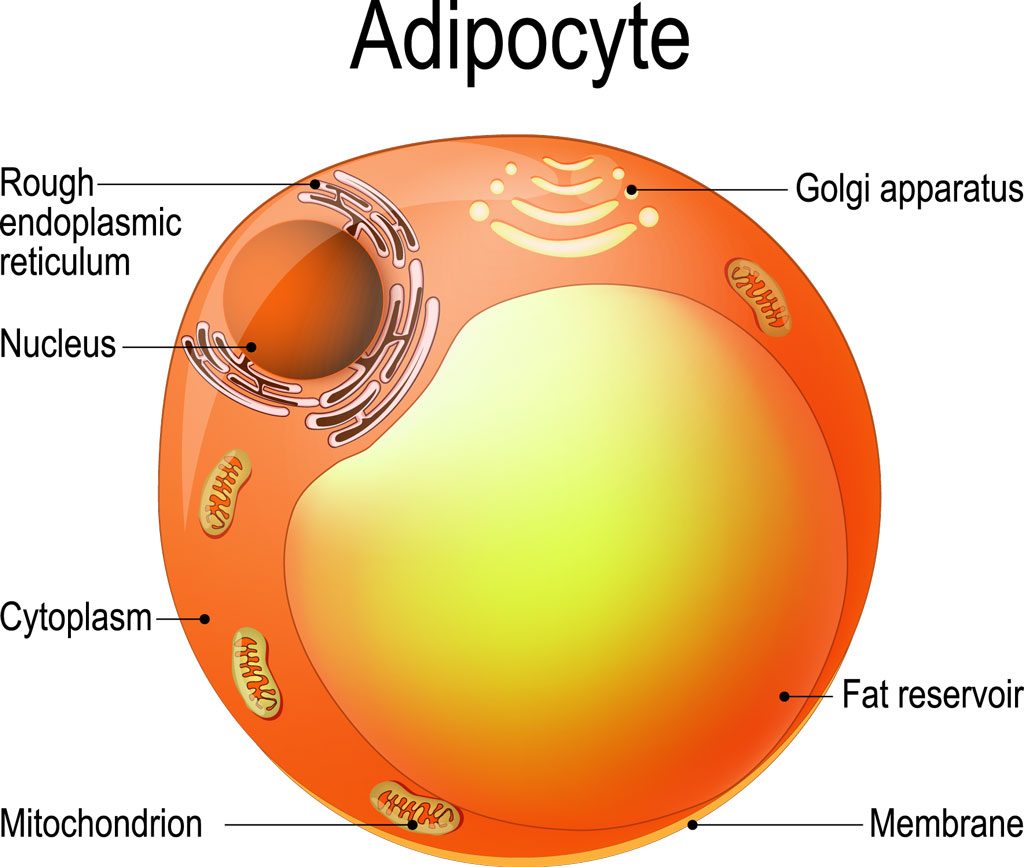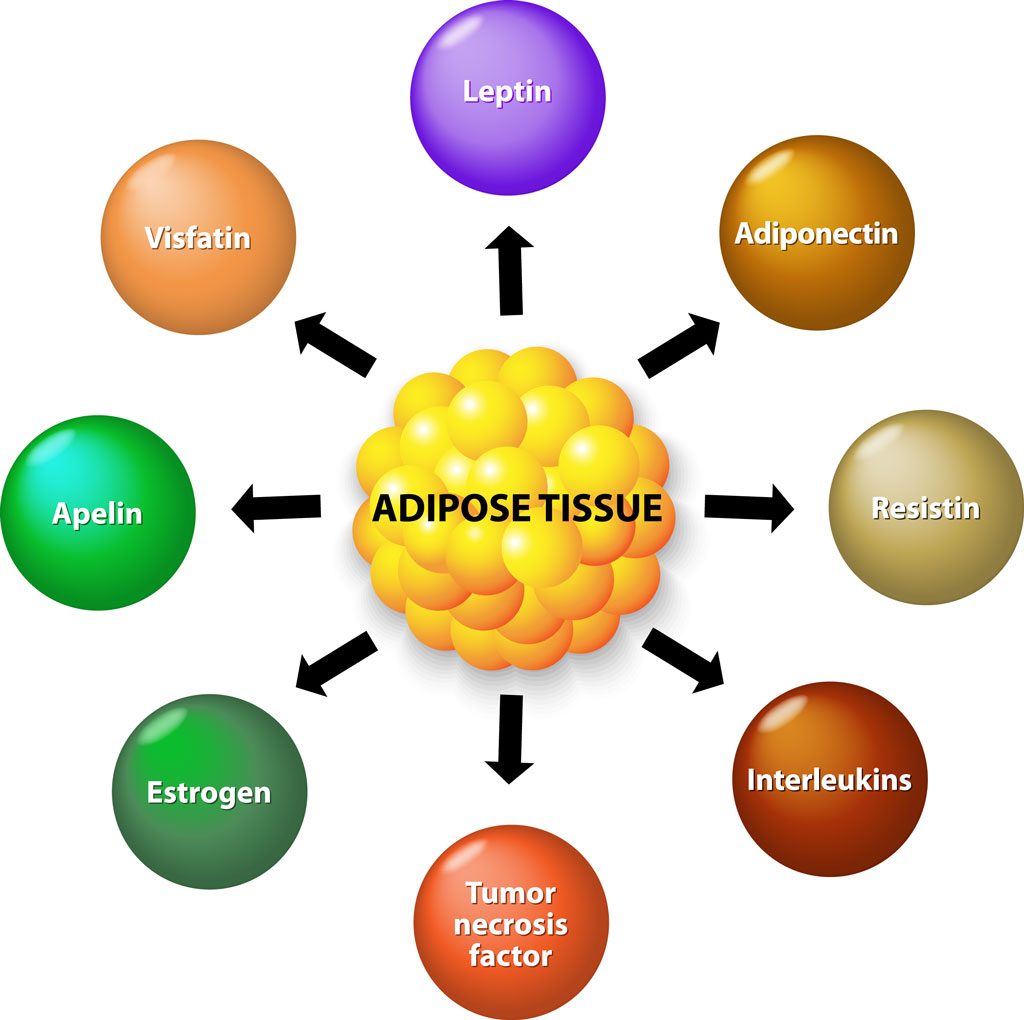Each year, American’s spend billions of dollars on weight loss products; dietary programs and new trends “guaranteeing” pounds will come off quickly using their plan. The desperation to shed unwanted body fat is clear, yet many individuals continue to struggle with their weight. Why does this remain such a growing problem in America today? It’s partially due to misconceptions regarding the scientific nature of weight / fat loss coupled with an obvious urgency for people to understand the complexity of obesity, fat storage and fat metabolism at the cellular level.
Extensive studies have shown that excess body fat/obesity is a widespread, multifaceted disease correlated with other health problems that negatively affect an individual’s quality of life. With the overwhelming increases in obesity today, the National Institute of Health, the American Association of Clinical Endocrinologists and other organizations invest a tremendous amount of time and money studying this epidemic crisis – specifically the neurological, hormonal, genetic, social and metabolic origins of obesity.
 Basic biology tells us that dietary fats and lipids(all fats, oils, and sterols) are broken down into structural chains of fatty acids stored in our fat cells as adipose tissue. A certain amount of stored body fat fulfills three, essential roles: Fat acts as our primary fuel reserve in the form of triglycerides; chains of fatty acids are building blocks for key membrane constitutes, and fatty acid derivatives serve as hormonal and intercellular messengers. Our bodies need essential fat for optimum functioning, however, excess reserves of adipose tissue can have severe consequences. For example, fat cells can expand three to six times their normal size, with a seemingly infinite capacity to make more of themselves. When fat cells reach their maximum storage capacity, they can “burst” much like an over-inflated balloon. The secreted substances (inflammatory chemicals) act like a poison in the body. Once the cell bursts, new fat cells develop in an effort to store excess fuel reserves and chemical wastes. As the degree of obesity increases, the duplication of fat cells continues to escalate.
Basic biology tells us that dietary fats and lipids(all fats, oils, and sterols) are broken down into structural chains of fatty acids stored in our fat cells as adipose tissue. A certain amount of stored body fat fulfills three, essential roles: Fat acts as our primary fuel reserve in the form of triglycerides; chains of fatty acids are building blocks for key membrane constitutes, and fatty acid derivatives serve as hormonal and intercellular messengers. Our bodies need essential fat for optimum functioning, however, excess reserves of adipose tissue can have severe consequences. For example, fat cells can expand three to six times their normal size, with a seemingly infinite capacity to make more of themselves. When fat cells reach their maximum storage capacity, they can “burst” much like an over-inflated balloon. The secreted substances (inflammatory chemicals) act like a poison in the body. Once the cell bursts, new fat cells develop in an effort to store excess fuel reserves and chemical wastes. As the degree of obesity increases, the duplication of fat cells continues to escalate.
As mentioned, body fat is stored in the form of triglycerides. Triglycerides(chains of fatty acids) continually circulate throughout the body, but they primarily specialize in storage as adipose tissue. If an individual is consuming more food than their bodies can metabolize, the surplus of calories is deposited in a multitude of fat cells. Considering that one-pound of body fat stores approximately 3,500 calories, an extra 50 pounds has an excess fuel reserve of 175,000 calories! To lose 50 pounds of body fat, one needs to “burn” and dispose of the excess reserve through sequential chemical and metabolic processes at the cellular level. Enzymes and key nutrients play a significant role.
Triglycerides are broken down by the enzyme lipase. It’s a metabolic system of fatty acid oxidation regulated by hormones, catalytic reactions and a proper balance of key nutrients (proteins, carbohydrates, and dietary fats). Proteins (containing amino acids), carbohydrates (containing carbon chains) and dietary fats (FA’s) have unique nutritional properties to help maintain synergy within the body. Scientifically, carbohydrates do not need any assistance from fatty acids to help them metabolize, however, fatty acids need carbon chains for hydrolysis (the breakdown of stored body fat).
Carbohydrates usually get a bad rep for causing weight gain, and many people avoid them on a “diet” without realizing that vegetables and legumes are classed as carbohydrates - leafy greens, broccoli, asparagus, fresh green beans, snap peas, etc. Legumes also contain a good source of fiber – they provide quality nutrients, aid in digestion and the elimination of food byproducts. The saying “Fat Burns in the Flame of Carbohydrates” bears truth. Without some carbohydrates in the diet, there is an incomplete breakdown of adipose tissue and a decrease in the rate of fatty acid oxidation at the cell level.
Fatty acid oxidation also has to occur in the “powerhouse” or mitochondria of a cell. Long chain fatty acids cannot penetrate into the cell membrane without the presence of carnitine, a compound formed from the essential amino acids lysine and methionine. Both of these amino acids are found in animal proteins and complementary vegetarian sources. Although L-carnitine and other supplements are widely marketed to enhance weight-loss, no conclusive medical evidence supports these claims. Nutrient intake should come from high-quality food sources prior to investing money in supplements that may or may not work.
If asked, do you think fast food burgers and egg-muffins contain a decent supply of essential amino acids and quality nutrients to support fat burning at the cell level? Would your body respond better with whole food sources in the diet, or perform better with processed foods? How do you think your body metabolically reacts to a greasy hot-dog over fresh vegetables, baked chicken, fish or legumes? The obvious answer is to spark your metabolism with nutritious foods in their most natural state.
In the book “Fat Land”, Greg Critser takes us back to several developments in the food industry that have also contributed to the obesity crisis. Back in the 1970s, corn surpluses led to the production of high fructose corn syrup found in several food products today – including soda and snack drinks. Cheap imports of palm oil and kernel oil combined with advances in technology led to increases in the number of convenience foods, snack items, and artificial flavorings. Because our bodies metabolize high fructose corn syrup, palm oil, and palm kernel oil differently than “natural food sources”, these additives and preservatives have been shown to prompt fat storage, increase adipose tissue, elevated levels of triglycerides, cholesterol, glucose, and insulin, and increase the risk factors for associated diseases.
Controversial Issues with Obesity
- Obese people are not getting critical chemical signals to their brain to sense fullness:
 Under normal conditions, the hormone, grehlin, signals the brain to tell the body it has had enough to eat, to more or eat less. Some studies suggest that obesity is associated with either a transport or interpretation problem with grehlin function. Other studies suggest that excess body fat, in itself, triggers an impairment of this gut hormone signaling. The more adipose tissue an individual has, the greater the impairment becomes. For example, Studies have shown that obese mice develop a brain-barrier defect that causes them to eat more and store more body fat with age, but skinny mice stay about the same weight and eat until satisfied (William Blanks; MD).
Under normal conditions, the hormone, grehlin, signals the brain to tell the body it has had enough to eat, to more or eat less. Some studies suggest that obesity is associated with either a transport or interpretation problem with grehlin function. Other studies suggest that excess body fat, in itself, triggers an impairment of this gut hormone signaling. The more adipose tissue an individual has, the greater the impairment becomes. For example, Studies have shown that obese mice develop a brain-barrier defect that causes them to eat more and store more body fat with age, but skinny mice stay about the same weight and eat until satisfied (William Blanks; MD). - Hormonal Defects and Insulin Resistance Cause Obesity: Hormonal defects and insulin resistance do not specifically cause obesity, however, obesity has been shown to play a dominant role in insulin resistance. Once a person moves into the state of obesity, hormonal balances for fuel metabolism are impaired. As a result, glucose and insulin levels are compromised. Left untreated, the risk of Type II Diabetes is inevitable.
- Fat Deposits are Determined at Birth: We are all born with a certain number of fat cells. However, as discussed earlier, when an adipocyte has reached full storage capacity, hormonal signals drive the process of fat cell multiplication. If unnecessary calories continue to enter the body, adipocytes will continue to multiply over and beyond what an individual had at birth.
- Obesity is all Genetic: According to the Harvard School of Public Health, genetics only plays a small role in whether someone will become obese. If a parent or both parents are obese, a child may be born with a greater number of fat cells, but it doesn’t mean they will become obese. Weight gain is influenced by a combination of environmental and lifestyle factors more than genetic make-up alone.
- Neurological and Social Environment Trigger Obesity: With billions of neurons firing in complex circuits, scientists cannot measurably peer into your mind and emotions to suggest obesity is caused by a neurological malfunction. They can, however, measure physical behaviors and the social environment surrounding that behavior. There are external factors that often prompt poor lifestyle choices and dietary habits. These include: eating out more often; a trend of eating more fast foods; super-sizing meals; spending more time watching TV or playing video games; opting to drive because it’s easier than walking; organizing social events around food; taking the elevator over the stairs, or opting out of exercise because “it takes too much time”.

